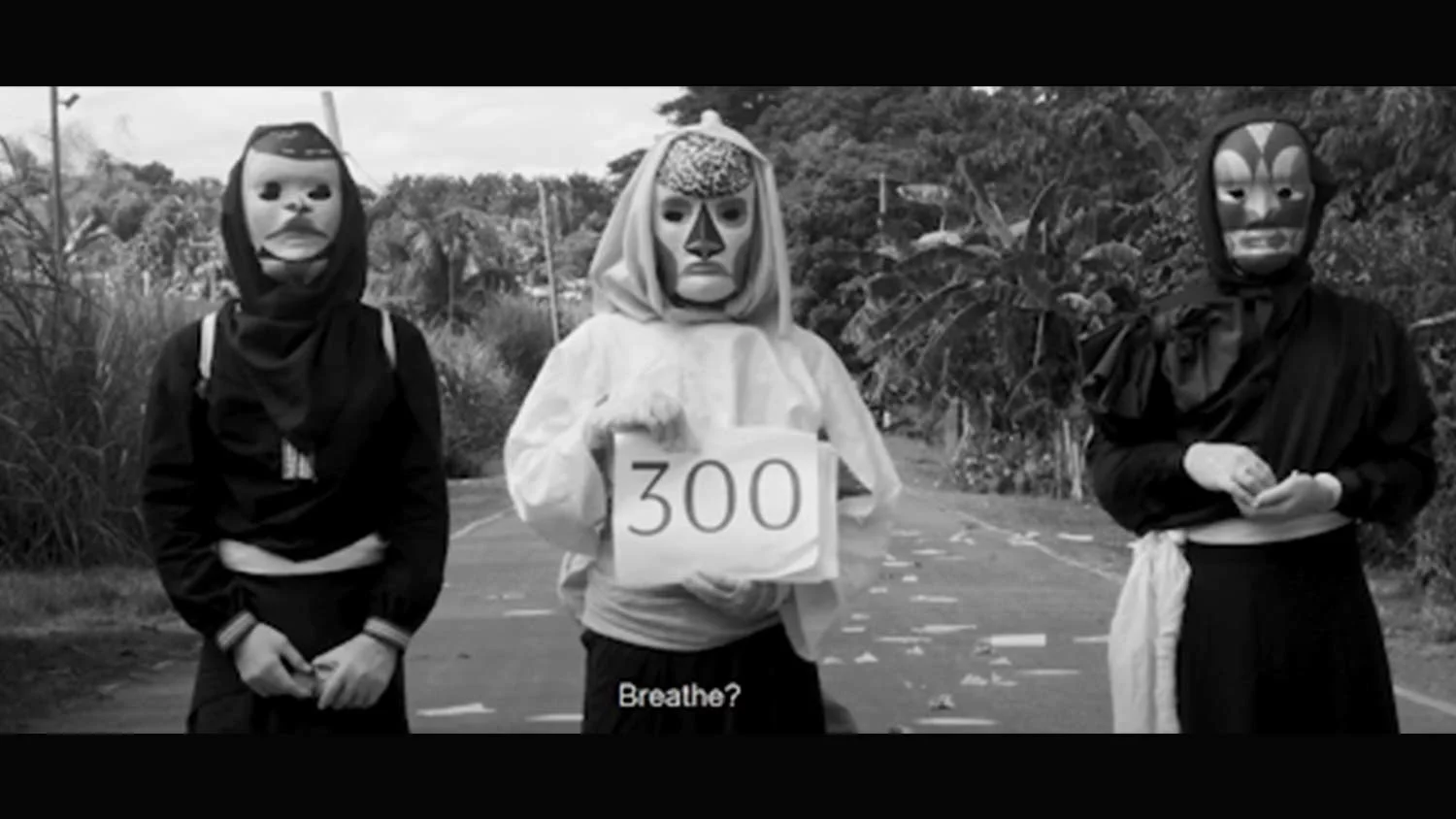A glimpse of the pandemic: ‘The New Faces (of Dreams and Mysteries)’
By Crystal Yeo

Watching Mark Raymund Garcia’s The New Faces (of Dreams and Mysteries) seated spaced out from my peers – whose unmasked faces I had only seen from our SGIFF booklet – was a stark reminder of a reality that still feels like a dream. Delivering sharp commentary on “the new faces” of society amidst the COVID-19 pandemic, The New Faces prompts audiences to decipher the use of its strong aesthetic elements.
With a background in theatre, Garcia incorporates performative elements in The New Faces. From the unsettling synchronization of the masked performers on the lookout for an invisible enemy, to their awkward, asynchronous expression of affection with nature and one another, The New Faces hints at the nature of relationships formed during the pandemic. The familiar becomes foreign, and the foreign, familiar, as we see the performers struggling to navigate their individual relationships with other human and non-human forms in a time of social distancing and recurring lockdowns.

Garcia’s use of strobe lights was disorienting, and even dizzying personally. With flashing sequences, mismatched images and “glitches” in the film, Garcia subverts narrative conventions. Instead, images symbolising death rites, the pervasiveness of technology, and an incessant passing of time are presented. Death becomes a running count as seen in the performers’ placard, mirroring the way we count – and lose count of – the days, months, and years it has been since the pandemic started. The intentional manipulation of lighting is therefore both a bold stylistic choice creating discomfort in one’s viewing experience, as well as a powerful technique to convey the blurring of reality and time.

Accompanying these images is a faint whispering of the film’s narration between laboured breaths. At times distracting, at time intriguing, it serves as a literal representation of one’s speech under a suffocating mask, while symbolizing the overall stifling atmosphere amidst pandemic laws. Sound designer Marc Sumbi reinforces the film’s themes by introducing the audience to a mid-credit sequence via a strong percussion beat. Interrupting the music layered over the credits roll, the percussion beat resembles a heart beating desperately before fading out at the end of the sequence to reveal the sound of a flatline. With an abrupt cut to a black screen, The New Faces’ mid-credit sequence powerfully mirrors the image of one’s death after a relentless fight against the disease.
The intentional presentation of the film in monochromatic colours is a powerful creative choice that reasserts the film’s imagery of death. Designed by the talented Jossam Lumanog, the beautifully haunting masks were inspired by Negrense artist Nunelucio Alvarado. As a contemporary artist, Alvarado is famous for his bold use of colours and hieratic representation of bodies and faces resembling Egyptian paintings. It may therefore be no coincidence that under a monochrome view, these masks bear a harrowing resemblance to images of skulls under an x-ray scan.

Upon deconstructing the film’s components and analysing each one, I found myself asking the question, “What makes a film an experience?”. As a short film, The New Faces manipulates elements of strobe lighting, colour (or the lack of it), and sound design, challenging the audience’s perceptual faculties. Combined with a unique viewing experience during the pandemic, The New Faces delivers an experience that is both physically and emotionally unsettling.